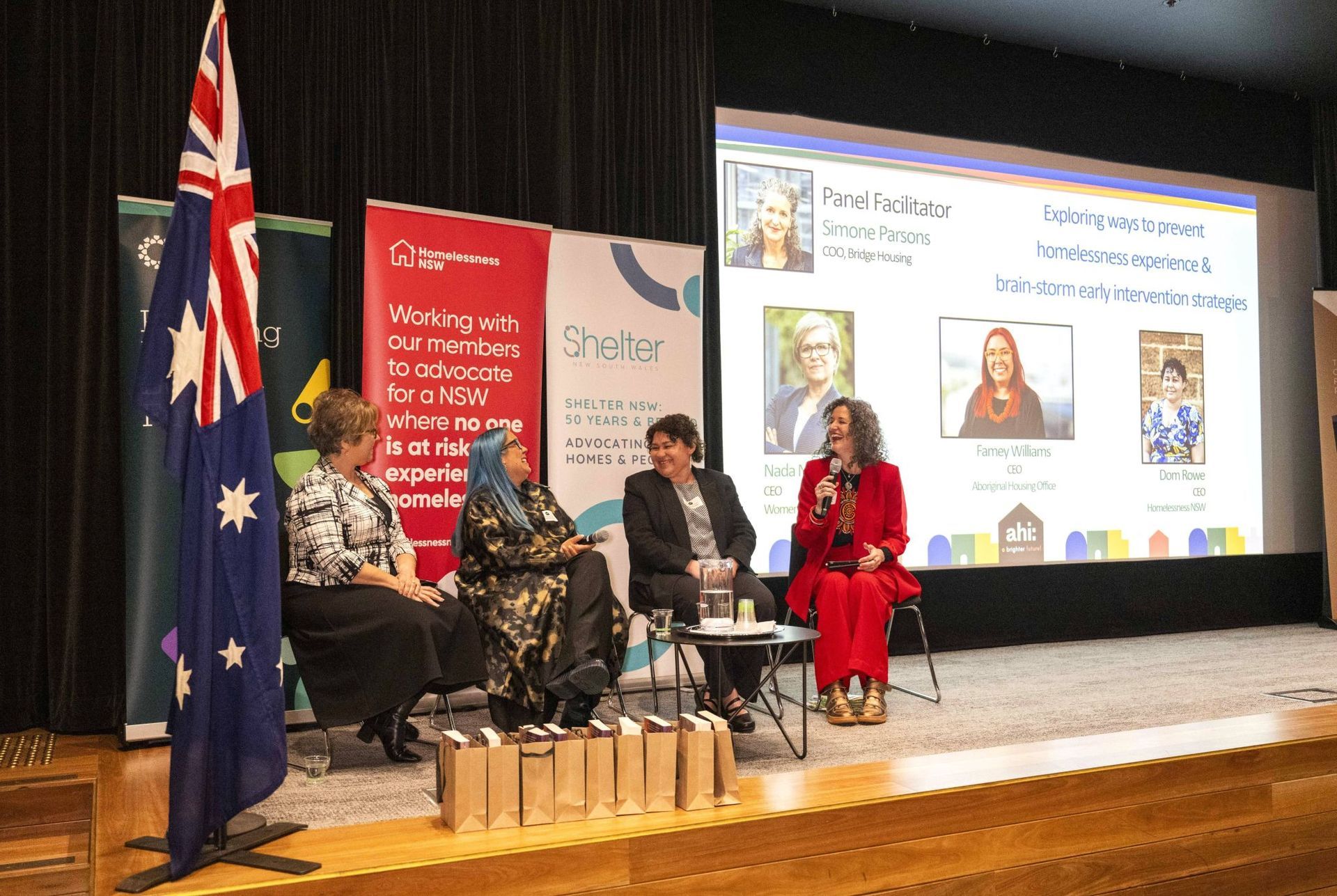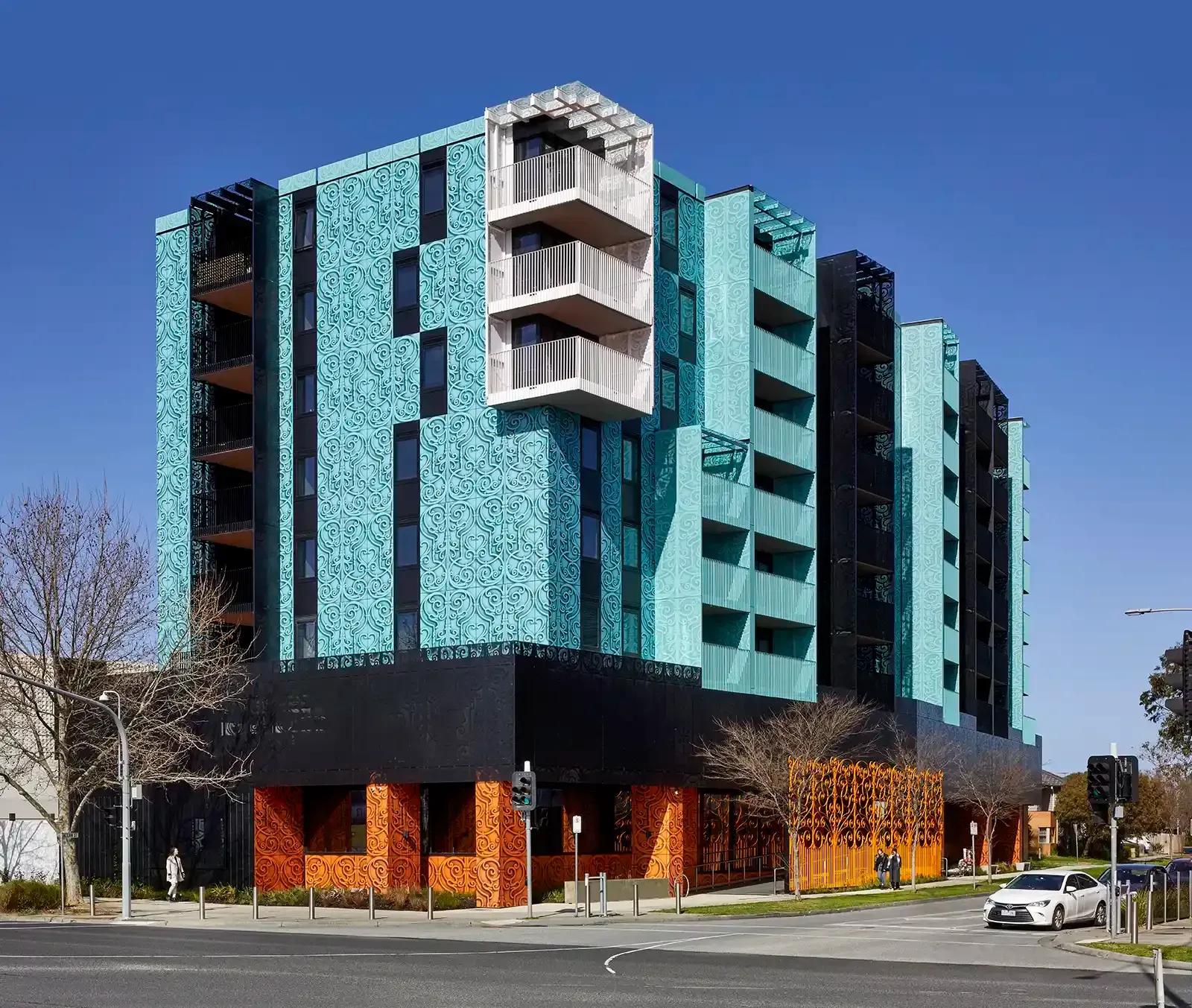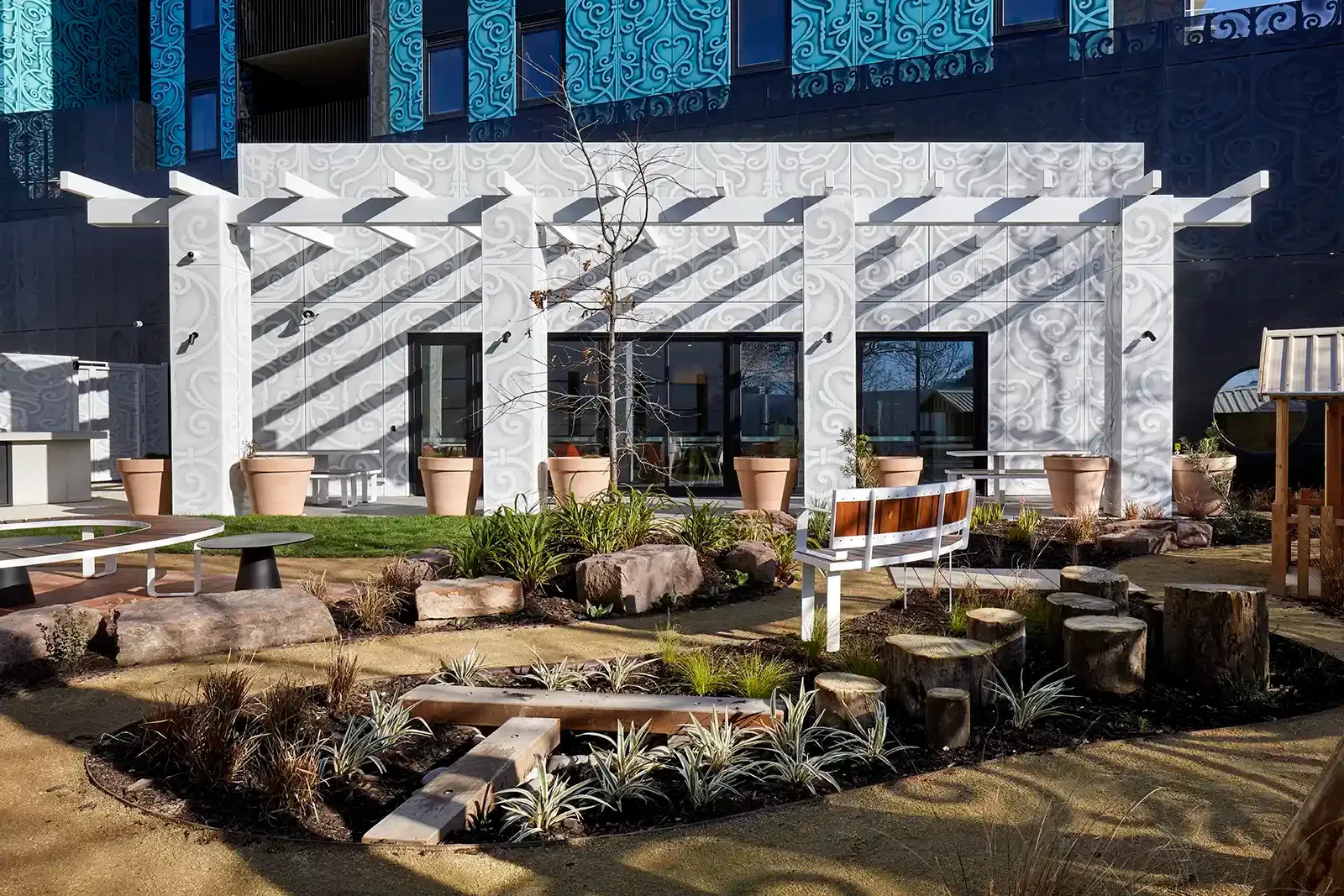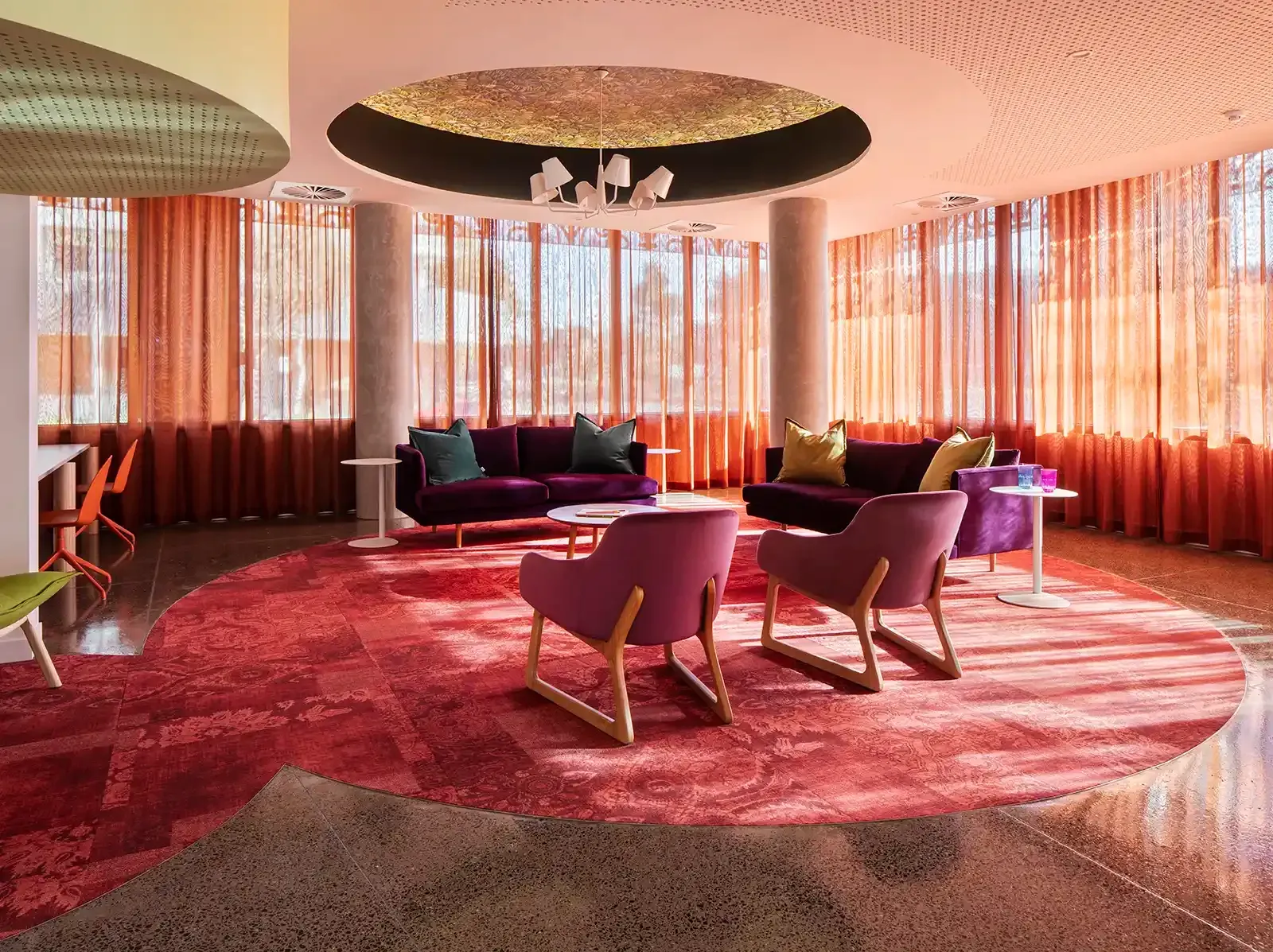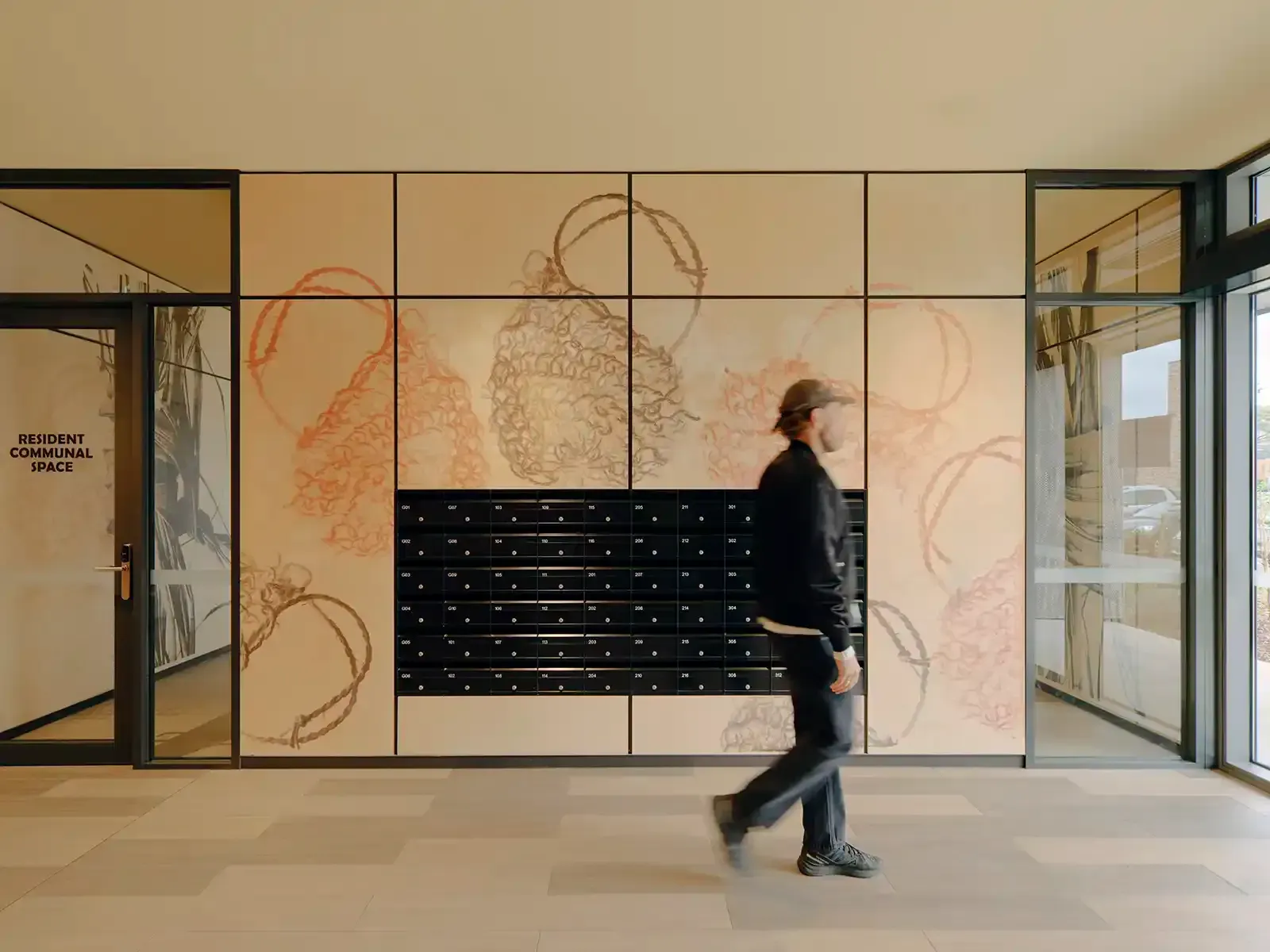In tackling our housing crisis, Launch Housing is doing its part. Alexa Tsoulis-Reay and Kristy Frame run through two of the organisation’s landmark projects – Bellfield, and the winner of the 2023 Australasian ahi: Brighter Future Award for Leading Housing Development, Viv’s Place.
Victoria, like the rest of Australia, is in the midst of an unprecedented housing, cost of living and homelessness crisis. Demand for all kinds of housing is exponentially high – as of March 2024, there were nearly 60,000 applications for social housing across the state.
Cost of living is at record levels, and rents have never been more unaffordable. At Launch Housing, we have seen a steady increase in the number of working Melburnians who are struggling to pay the rent. The percentage of our clients in paid employment who came to us for support paying rent rose from 9.5% in 2019-20 to 20% in the last financial year.
Ending homelessness starts with creating more homes, and at Launch Housing, our owned portfolio keeps growing. We now own and manage 850 properties across the Greater Melbourne area.
Viv's place was modelled on the Sugar Hill project — an affordable housing building in New York City.
In 2022, we hit a significant milestone when we opened the doors to Viv’s Place: Australia’s first supported housing development specifically designed for women and children who have experienced family violence. Viv’s Place was modelled on the Sugar Hill project – an affordable housing building in New York City.
Family violence is the leading cause of homelessness for women and children; in fact, 40% of people seeking homelessness services in Victoria have experienced family violence. But there’s a shortage of affordable, safe and supported housing for those who are leaving violent situations. Viv’s Place offers an innovative solution.
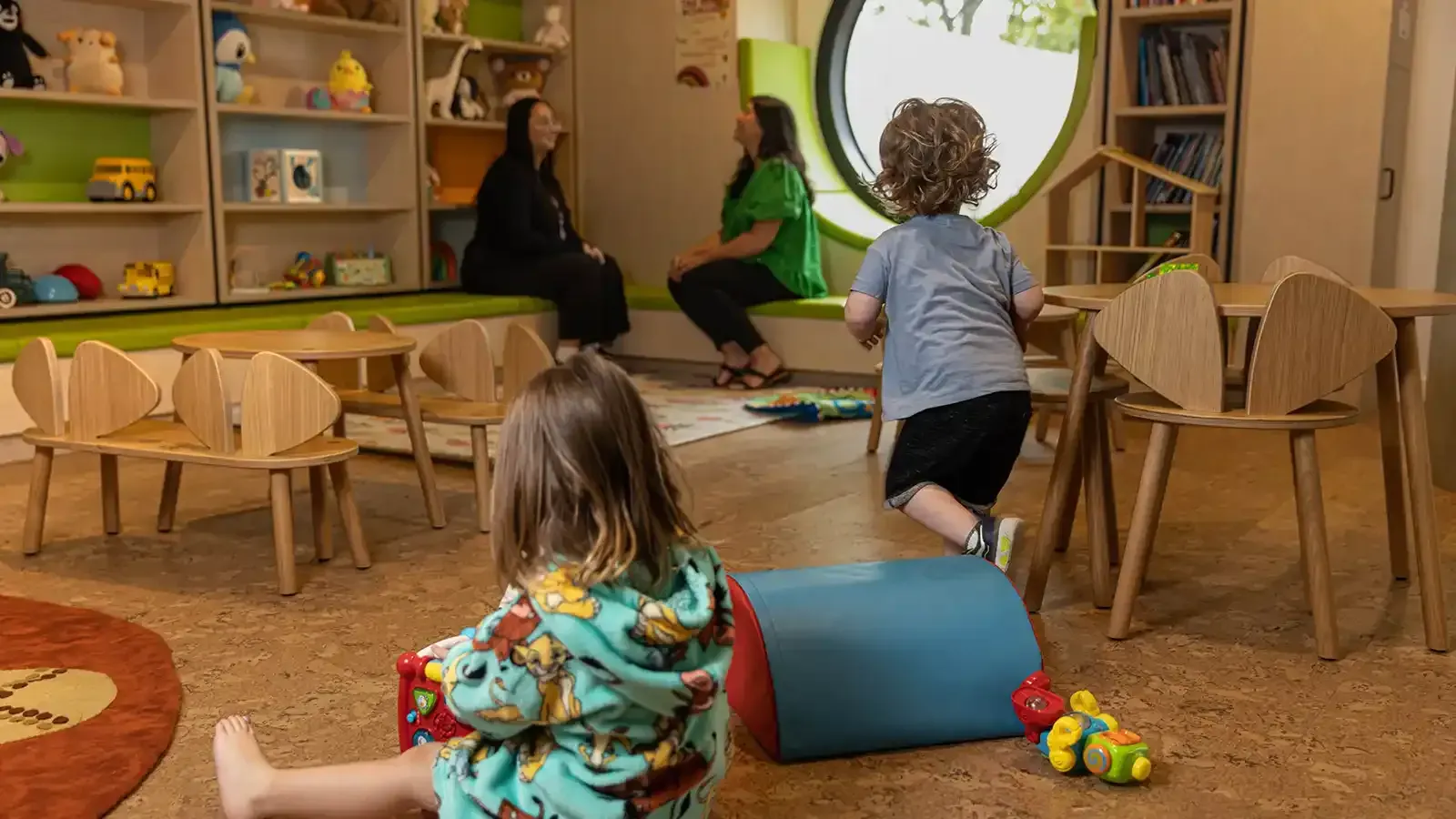
"The building’s trauma-informed design by ARM Architecture was the result of years of consultation with a range of stakeholders and subject matter experts.”
Close to public transport in Dandenong, in Melbourne’s southeast, the complex provides 60 permanent apartments with on-site, ongoing support, 24-hour security and a strong community. The building’s trauma-informed design by ARM Architecture was the result of years of consultation with a range of stakeholders and subject matter experts. The outcome: Modern apartments, from studio to four-bedroom, which comfortably house a range of family sizes from single-parent to intergenerational. Today, it’s home to 60 women and over 100 children.
Viv’s Place has a communal kitchen and living area, play spaces filled with books and toys, a library to explore with new friends, and opportunities to create bonds with others. These new connections have significant impact, as domestic and family violence often includes social isolation, blocking women from vital social supports.
The $30 million development had a 40% contribution from the Victorian Government and was anchored by donations from the Australian Nursing and Midwifery Federation, the Lord Mayor’s Charitable Foundation and the Shine On Foundation. Viv’s Place also received generous support from the Gandel Foundation, the Ian Potter Foundation and many other compassionate people and families.
Because many of the residents experience the ongoing impacts of trauma, wraparound care is also available i.e. the supply of accommodation alongside services including health, wellbeing, legal and psychological support.
The Education Pathways Project is an example of one of these wraparound services. It’s one of the only programs in Victoria that supports children who are overcoming the trauma of family violence and homelessness engage in school and address gaps in their learning.
Since the Education Pathways Program started running out of Viv’s Place in 2023, over 70 children have received case management to attend and engage in education, with supports including psychological and speech assessment and intervention, and homework and breakfast clubs. The program works closely with local schools and educators to better support children who have experienced trauma and disadvantage. That same year, the program was co-winner of the Engaging Kids in School award at the Victorian Department of Education’s Protecting Children awards.
Viv’s Place itself has also won several awards, including the 2023 Australasian ahi: Brighter Future Award for Leading Housing Development Project. The award recognises the Viv’s Place model – long-term housing with wraparound supports.
Early findings of a developmental evaluation of Viv’s Place show that most women feel safe there, and that it provides them with a stable home. As residents put it:
“I am so happy that we finally have stability. I am grateful that I can finally raise my children in a secure environment that we feel safe in.”
“No more living in motels or being in domestic violence situations.”
“Viv's Place is such a blessing. My son feels safe at our home...our lives have changed forever.”
Viv's Place shows that collaboration with government and partners can lead to innovative homelessness solutions. As Laura Mahoney, Launch Housing’s Executive Director of Homelessness Solutions and Impact, says, “Viv’s Place is Australia’s first project of its type offering permanent homes, ongoing support, strong community, and a safe place to live for women and their children. We hope that it offers a best-practice example to inspire others in Victoria, and beyond.”
Samantha Ace, Head of Development, agrees, "There's so much potential for increased funding from the Federal Government, and the success of Viv’s Place is proof of concept: We can deliver.”
There is much work to do, and with a range of new and exciting housing projects in the pipeline following the success of Viv’s Place, progress is happening.
Bellfield Social Housing Development: Further proof we can create change
In 2023, Launch Housing’s latest social housing development at Bellfield was unveiled. An apartment building providing 58 homes, the $22 million dollar project was delivered in partnership with the City of Banyule and Homes Victoria, with funding from the Victorian Government’s $5.3 billion Big Housing Build.
The four-level sustainable building, also designed by ARM Architecture, features a mix of studio, one-bedroom and two-bedroom homes. It has generous indoor and outdoor communal spaces for residents to enjoy including a deck area with a BBQ.
The environmental benefits of the design both lower living costs for residents and reduce the environmental impact of the development, with a rainwater harvesting system and solar panels generating clean energy. The building has a timber structure, which reduces the development’s carbon footprint.
Site-specific artworks are integrated into the communal spaces, including work from First Nations artist Cassie Fisher-Patterson symbolising the tying together of the five Kulin Nation clans.
“Bellfield is home to over 80 people who were on the priority list of the Victorian Housing Register.”
Bellfield is now home to over 80 people who were on the priority list of the Victorian Housing Register. Residents include single people, older people, couples and small families, and a diverse mix of Aboriginal and Torres Strait Islander and culturally and linguistically diverse households. There have even been three babies born since Bellfield opened its doors.
Community and connection are similarly embedded into the foundations of Bellfield. People with ties to the area were prioritised when apartments were allocated.
Bellfield’s tenancy manager, Tessa Densley, recently presented at Australia’s first People’s Commission into the housing crisis as part of a panel devoted to the benefits of social housing. She told the commissioners about the powerful impact that Bellfield has had on the lives of its residents – many of whom have become her friends.
Like 77-year-old Lydia. Before Bellfield, Lydia spent 15 years living in a caravan park because that’s all she could afford. As she got older, her friends worried more and more about her safety, but she couldn’t afford to live anywhere else. Or Andrew, who lived with his daughter as her carer while she battled cancer. When his daughter passed away, Andrew couldn’t afford to stay in their home.
At Bellfield, Lydia feels safe. She visits Tessa’s office most mornings for a cup of coffee and continues her day seeing her friends who no longer feel worried about her welfare. Andrew is living close to his grandkids, forging connections with neighbours and focusing on his health.
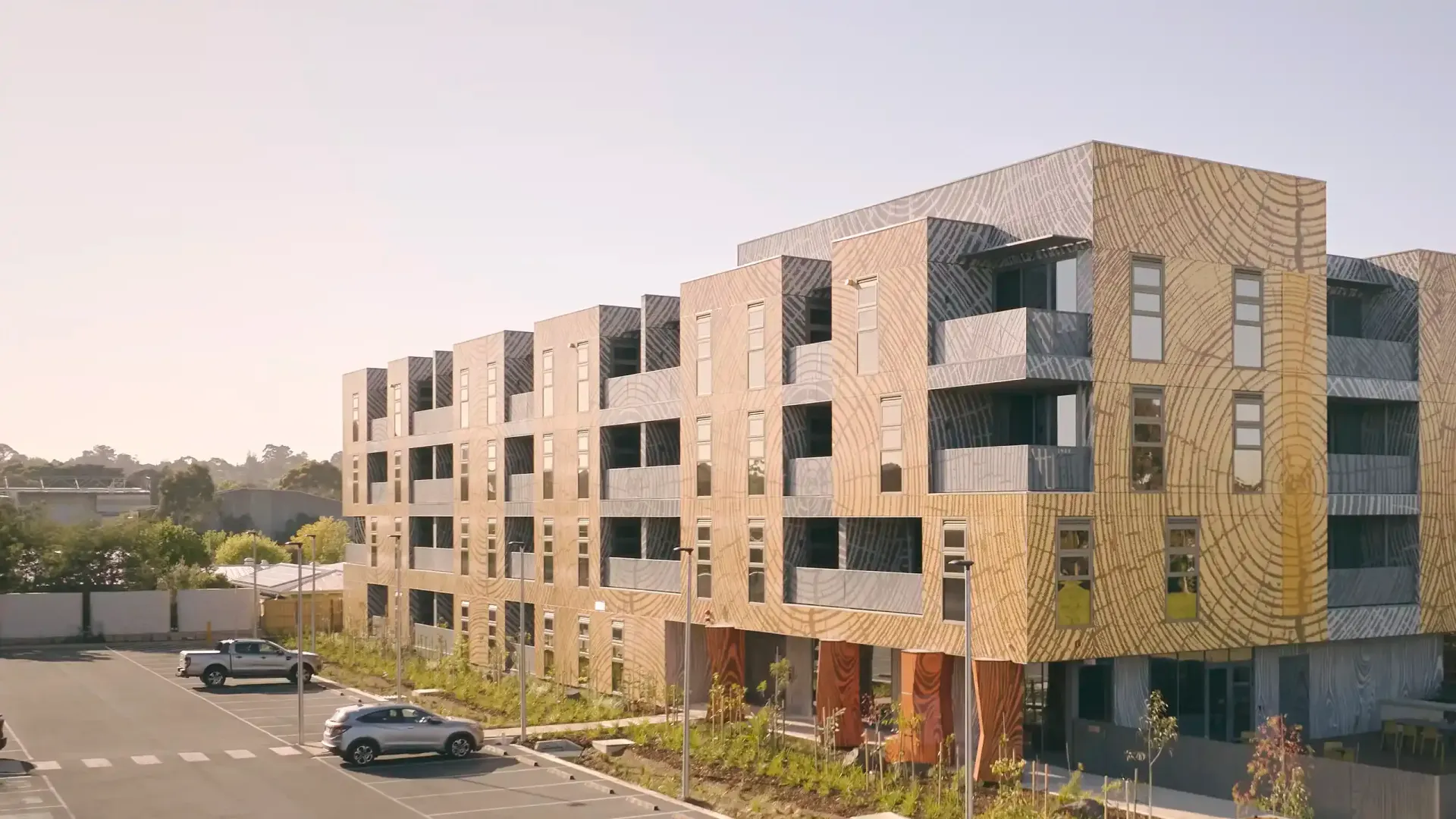
“At Bellfield, healing happens and thriving begins.”
At Bellfield, healing happens and thriving begins. Like Viv’s Place, it's an innovative model of partnership that can and should be replicated across Melbourne and in states and territories across Australia and Aotearoa New Zealand.
“Local, state and federal governments own a significant amount of land that is often unutilised or underutilised, which doesn’t feel rational when we are in the midst of housing crisis,” says Samantha Ace. “This partnership between Launch Housing, Banyule City Council and Homes Victoria is providing safe and secure homes for our residents – homes that simply would not be available without this innovative approach from Council, a funding commitment from Homes Victoria, and the ongoing management of the project by Launch Housing for the next 50 years.”
Always focused on getting more homes
New research shows that supported housing for people with complex needs is required to ease the burden on the homelessness service system. Data from homelessness entry points across Melbourne over a seven-year period showed that people who repeatedly return have more complex needs. These repeat clients are more likely to have had extended experiences of homelessness, time during childhood in out-of-home care, domestic or family violence, or a mental health condition.
Laura Mahoney says, "This highlights the absence of long-term housing and support needed by the most vulnerable groups and clearly shows that we need to deliver more social housing, housing-first programs and long-term supported housing.”
“We’re not cookie-cutter, so we’re open to looking at every opportunity, bringing in different partners and doing things in different ways for a range of people.”
“We’re not cookie-cutter, so we’re open to looking at every opportunity, bringing in different partners and doing things in different ways for a range of people,” Samantha adds. “We are ambitious, and ambition is good when it enables you to deliver outcomes for people who need housing and support. And that ambition, underpinned by capability, is continuing to deliver outcomes.”
With the success of these two big projects, Launch Housing is now building on its reputation of being an experienced and safe pair of hands – by partnering with government, philanthropists and others to increase Melbourne’s supply of a range of social and affordable housing.
Samantha recalls that a member of our team was recently speaking with one of our long-term philanthropists. He was able to calculate for them that over a four-year period they’d been critical in delivering 180 dwellings.
“That’s profound,” says Samantha. “It was so powerful for them to realise that impact. That’s so many lives changed.”
Share This Article
Other articles you may like
